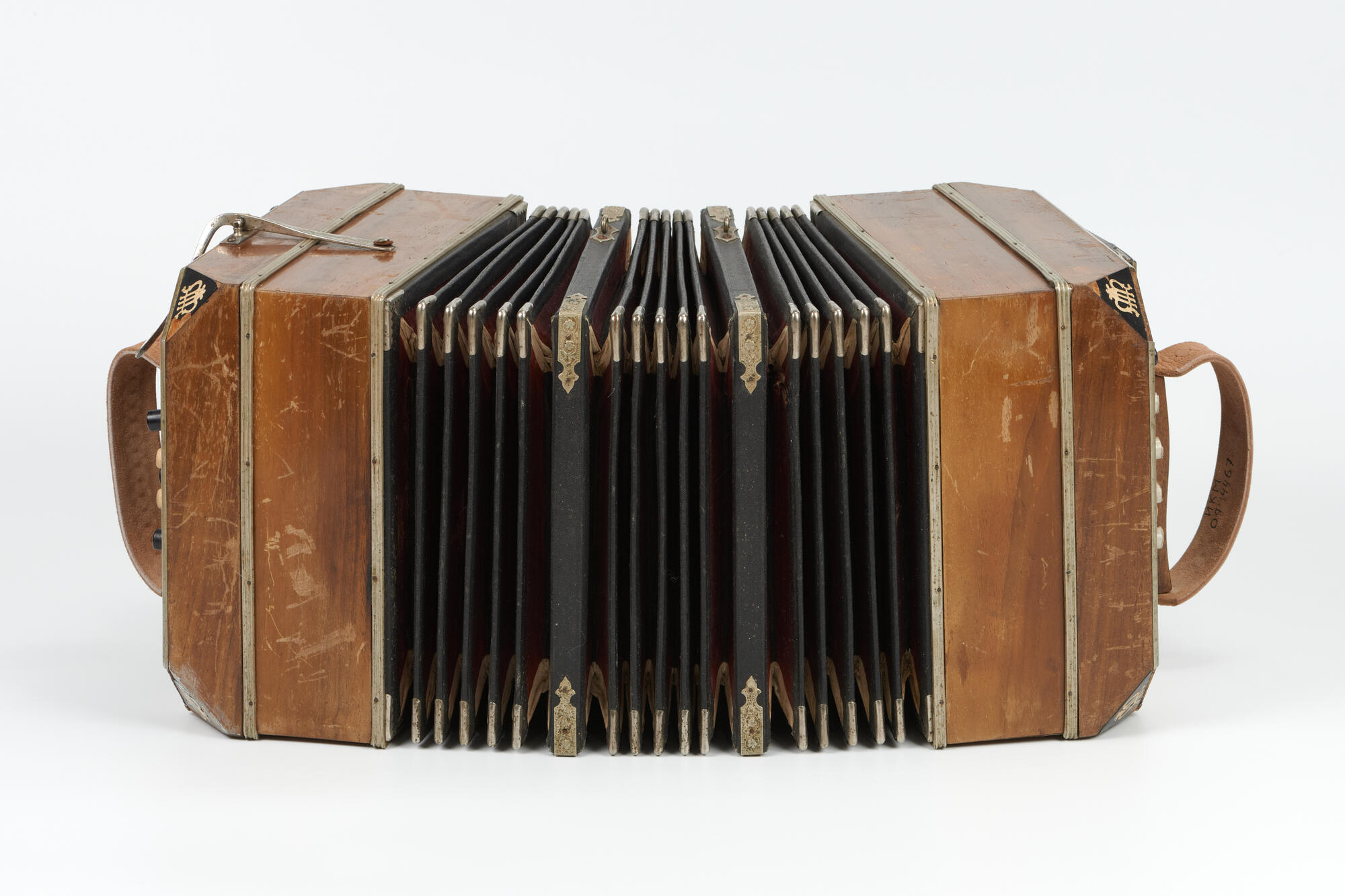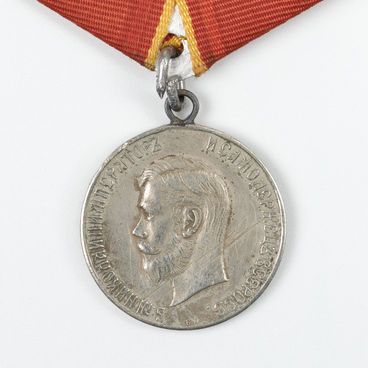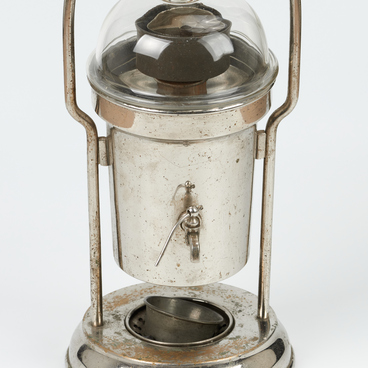The bandoneon is a hand-held concertina, reed musical instrument where sounds are produced by forcing air through bellows. Its name goes back to the designer Heinrich Band from Krefeld, Germany. Band designed it in the 1840s. The German concertina that was widespread in those days served as the design basis.
The bandoneon music was played unusually: the notes written on the lines, were played on the back plate with the left hand, and those located between the musical staff lines were played on the top plate with the right hand. The sound was created by metal reeds that vibrated under air pressure.
Originally, the bandoneon was used to play sacred music in German churches. At the end of the 19th century, the instrument came to Uruguay and Argentina and became an essential part of tango orchestras. It was the bandoneon that was used to play the main melodies of the Argentine tango. Composer Astor Piazzolla is considered to be the most famous bandoneon player.
The instrument from the collection of the Yershov Museum Complex of Ishim City was made at the beginning of the 20th century at the German factory ‘Alfred Arnold’. On the front, next to the bellows, one can notice the double-A trademark in a jagged circle logo. The company was founded in 1911 in Carlsfeld, Bavaria, Germany. Bandoneons labeled ‘AA’ were played at the best venues in Europe, and only in 1945, 30 thousand units were sent to Argentina and Uruguay. The instruments that Alfred Arnold had created until 1948 are still well-regarded today and their sounding remains the quality standard for each bandoneon manufacturer.
The bandoneon entered the collection of the Yershov Museum Complex of Ishim City in 2007. It was donated by Victor Rein. The instrument has a wooden case with beveled corners, decorated with lyre images on the plates. The buttons are made of wood and plastic, and the bellows are made of thick cardboard covered with fabric. The bellows are divided into three segments, and their two separators are trimmed with ornamented metal plates.
There are several types of bandoneons: chromatiphone, bandoneon with pipes, and bandoneon with the piano keyboard layout. Chromatiphone differs from the other bandoneon types as its keyboard layout remains constant, even when the instrument is turned upside down.
The bandoneon music was played unusually: the notes written on the lines, were played on the back plate with the left hand, and those located between the musical staff lines were played on the top plate with the right hand. The sound was created by metal reeds that vibrated under air pressure.
Originally, the bandoneon was used to play sacred music in German churches. At the end of the 19th century, the instrument came to Uruguay and Argentina and became an essential part of tango orchestras. It was the bandoneon that was used to play the main melodies of the Argentine tango. Composer Astor Piazzolla is considered to be the most famous bandoneon player.
The instrument from the collection of the Yershov Museum Complex of Ishim City was made at the beginning of the 20th century at the German factory ‘Alfred Arnold’. On the front, next to the bellows, one can notice the double-A trademark in a jagged circle logo. The company was founded in 1911 in Carlsfeld, Bavaria, Germany. Bandoneons labeled ‘AA’ were played at the best venues in Europe, and only in 1945, 30 thousand units were sent to Argentina and Uruguay. The instruments that Alfred Arnold had created until 1948 are still well-regarded today and their sounding remains the quality standard for each bandoneon manufacturer.
The bandoneon entered the collection of the Yershov Museum Complex of Ishim City in 2007. It was donated by Victor Rein. The instrument has a wooden case with beveled corners, decorated with lyre images on the plates. The buttons are made of wood and plastic, and the bellows are made of thick cardboard covered with fabric. The bellows are divided into three segments, and their two separators are trimmed with ornamented metal plates.
There are several types of bandoneons: chromatiphone, bandoneon with pipes, and bandoneon with the piano keyboard layout. Chromatiphone differs from the other bandoneon types as its keyboard layout remains constant, even when the instrument is turned upside down.



